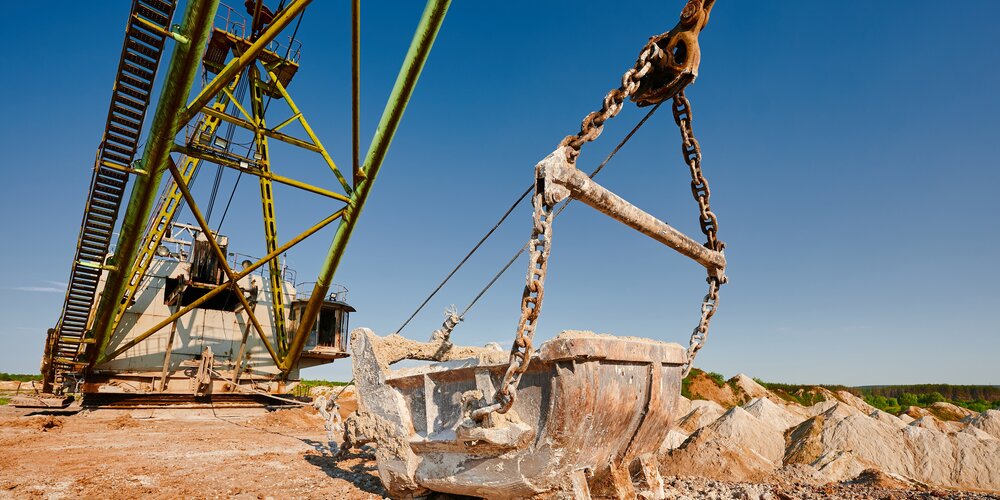
Working safely in high temperatures: what should you pay attention to when lifting and hoisting?
Working safely in high temperatures: what should you pay attention to when lifting and hoisting?
As temperatures rise, the physical strain on the workplace increases. For employees who are involved in lifting and hoisting activities on a daily basis, hot days pose additional risks. Heat affects not only people, but also equipment. As specialists in safe lifting and hoisting, we at Mennens are happy to share our knowledge about what you need to pay attention to in order to continue working safely in summer conditions.
Physical strain and loss of concentration
High temperatures increase the risk of dehydration, overheating, and fatigue. This has a direct impact on employees' concentration and alertness and, therefore, on safety in the workplace.
What can you do?
Ensure adequate hydration and rest breaks! Encourage regular water consumption, even when employees are not thirsty. In addition, schedule a few extra rest breaks so that employees can perform their work well rested. Choose suitable work clothing. Lightweight but protective, preferably UV-resistant. Also consider ventilation helmets or helmets with sun visors, especially when employees are working outdoors. Be alert to signs of overheating. These include dizziness, nausea, impaired coordination, or confusion. Ensure that colleagues watch out for each other and speak up.
Equipment: the effect of heat on lifting equipment
Lifting equipment such as slings, chains, and steel cables can be affected by heat and UV radiation. The risk of material defects increases, especially when there is heavy loading or prolonged exposure to the sun.
Important points to consider:
- Inspect more often: Visually check for wear, discoloration, drying out, or hairline cracks.
- Be careful with hot surfaces: Metal can become very hot in the sun. Use gloves with heat-resistant properties.
- Store lifting equipment correctly: Do not leave it uncovered in the sun. Storage in a shaded or ventilated area prevents unnecessary aging.
Working environment and weather influence
Sun, heat, wind, and sudden weather changes can combine to form a dangerous cocktail at the lifting site. These weather conditions not only affect comfort but also safety during lifting and hoisting. For example, the combination of heat and wind can cause a load to move or swing unpredictably. This makes maneuvering loads extra risky and requires a critical assessment of whether the lifting work is still safe under these conditions.
In addition, thunderstorms often occur at the end of a hot day. This poses immediate dangers, especially when working with metal parts and large hoisting structures. At the slightest suspicion of lightning danger, all hoisting and lifting activities must therefore be stopped immediately.
Finally, bright sunlight can also reduce visibility. Glare can lead to errors in judgment, especially during precision work. Wearing sunglasses that meet the appropriate safety standards or using a helmet with a sun visor can significantly reduce this risk. By taking these factors seriously, safe working conditions can be guaranteed even under changing weather conditions.
Organization and safety culture
Preventing incidents in hot weather starts with careful planning and clear communication. For example, it is wise to schedule heavy lifting early in the day when the temperature is still relatively low.
It is also important that employees are well trained: they need to know the health risks associated with heat and how to recognize signs of overheating in themselves and others.
With these measures, your organization lays a solid foundation for safe working, even on the hottest days.
Would you like advice on safe lifting and hoisting during hot summer days? Then contact us directly.
Additional risk: working in confined spaces at high temperatures
Working in confined spaces always involves risks. But in summer, these dangers increase rapidly. In such spaces, the temperature can rise to extremely high levels, while ventilation is often limited. The combination of heat, limited oxygen supply, and potentially dangerous fumes makes this type of work particularly risky.
What are the risks?
- Rapid body heating: In a confined space, the body has more difficulty dissipating heat, which increases the risk of heat stroke.
- Oxygen deficiency: Higher temperatures can further reduce oxygen levels, especially in combination with chemical vapors or combustion gases.
- Delayed assistance: In the event of incidents in confined spaces, it often takes longer for help to arrive, especially if there is no good communication or rescue plan in place.
Safety measures:
- Perform an LMRA (Last Minute Risk Analysis): Check just before starting whether all risks have been identified.
- Always measure the air quality: Check the oxygen content, temperature, humidity, and any toxic or explosive gases.
- Never work alone: Ensure that there is always a manhole guard or outside guard present who can intervene in case of an emergency.
- Use personal protective equipment (PPE): Consider breathing apparatus, cooling vests, or heat-resistant clothing, depending on the situation.
- Limit the duration of stay: Allow employees to work for shorter periods and alternate tasks with colleagues.
Conclusion: safety remains a priority
Safety always remains a priority. Working in the heat requires adjustments in behavior, planning, and the use of equipment. Especially in risky situations such as working in confined spaces, conditions can change quickly. Good preparation, clear procedures, and continuous monitoring make the difference between working safely and potential danger.
By taking timely measures, making employees aware of the risks, and regularly inspecting equipment, hoisting and lifting operations can also be carried out safely in high temperatures. Are you unsure whether your equipment is still suitable for summer conditions, or would you like advice on working safely in confined spaces? Contact our specialists for an inspection or tailored advice. Working safely is never optional – even when temperatures rise.





